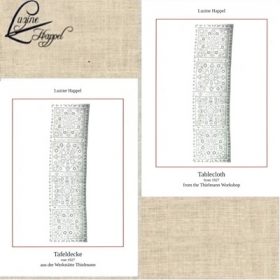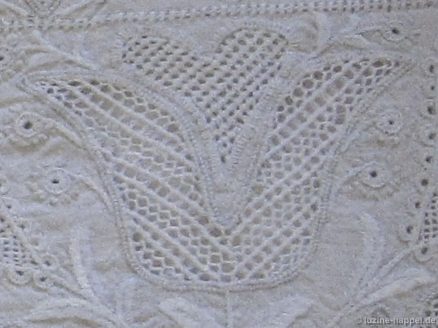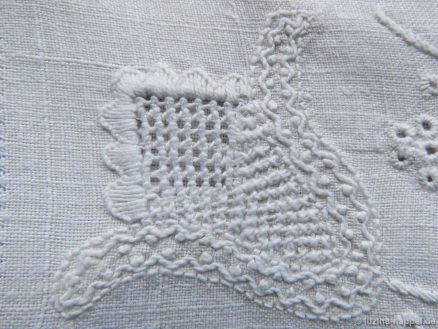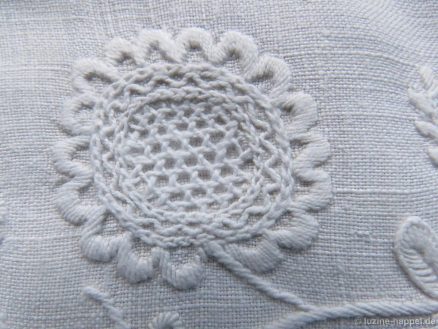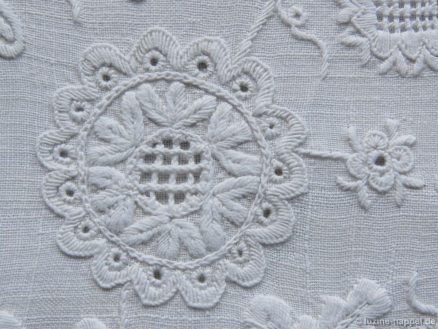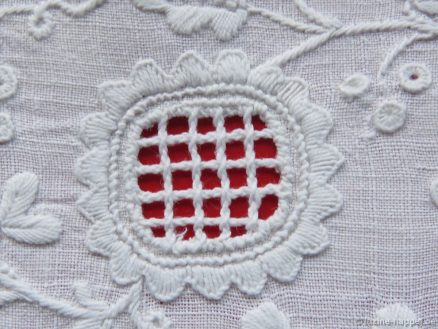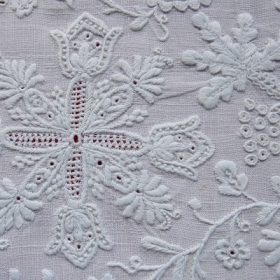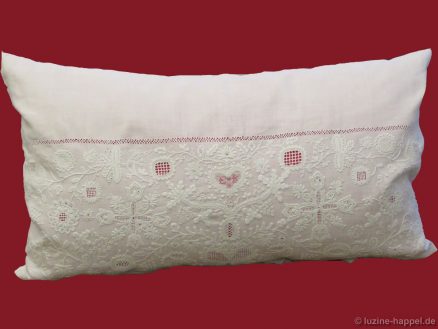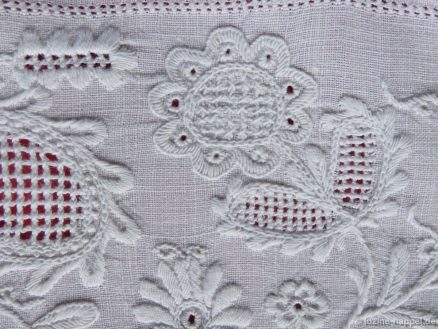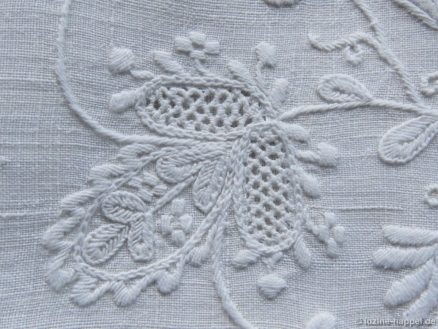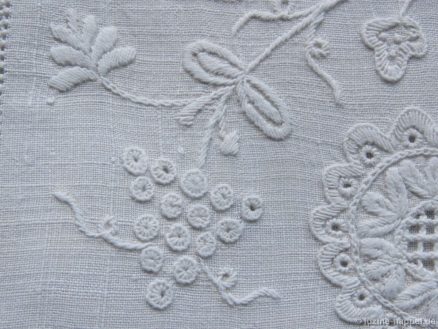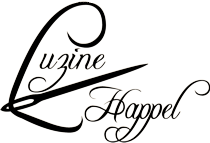Museum digital (2) – Tafeldecke von 1927 aus der Werkstätte Thielmann
In der Serie „Museum digital“ werden herausragende Stücke der Schwälmer Weißstickerei vorgestellt und durch viele Detailfotos dokumentiert. Zu jedem Foto gibt es eine präzise Beschreibung.
Das Pilotprojekt – mein Tulpen-Mustertuch – ist auf reges Interesse gestoßen.
Nun habe ich ein weiteres Stück mit erstrangiger und sehenswerter Stickerei vorbereitet: Eine wunderschöne und opulent bestickte Tafeldecke – datiert 1927 – aus der Werkstätte Thielmann.
Auf meiner Website wird vieles gratis zur Verfügung gestellt. Die Kosten für die Betreuung, Aktualisierung und Unterhaltung werden von mir getragen!.
Daher bitte ich um Verständnis, wenn ein derart zeitaufwändiges Projekt wie „Museum digital“ einen Kaufpreis hat – allerdings einen geringen.
Dafür erhalten Sie als Gegenleistung die „Tafeldecke von 1927 aus der Werkstätte Thielmann“ mit 140 hochauflösenden Fotos, die Sie in aller Ruhe betrachten und dabei jede Einzelheit erkennen können. Dazu gibt es eine 12seitige semantische Beschreibung oder – auf Wunsch – eine 36-seitige Beschreibung mit eingefügten Bildern.
Mit der Bestellung verpflichten Sie sich, die Fotos und Informationen nicht weiterzugeben oder in irgendeiner Weise zu veröffentlichen.
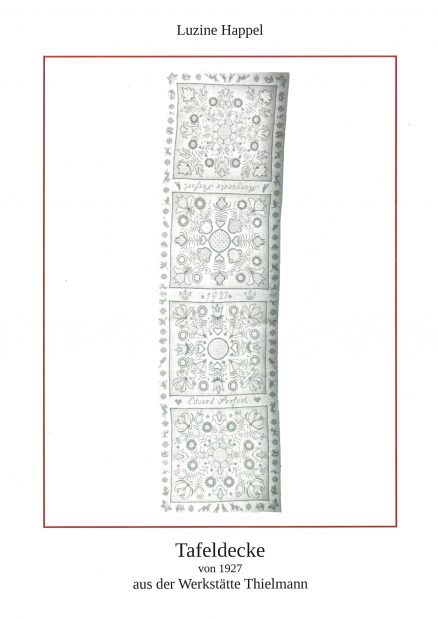
Tafeldecke
von 1927
aus der Werkstätte Thielmann
140 Fotos
12 Seiten Text DIN A 4
oder
36 Seiten Text mit Bildern
Text: deutsch
60,4 MB Dateigröße
5,00 €
zum Shop
